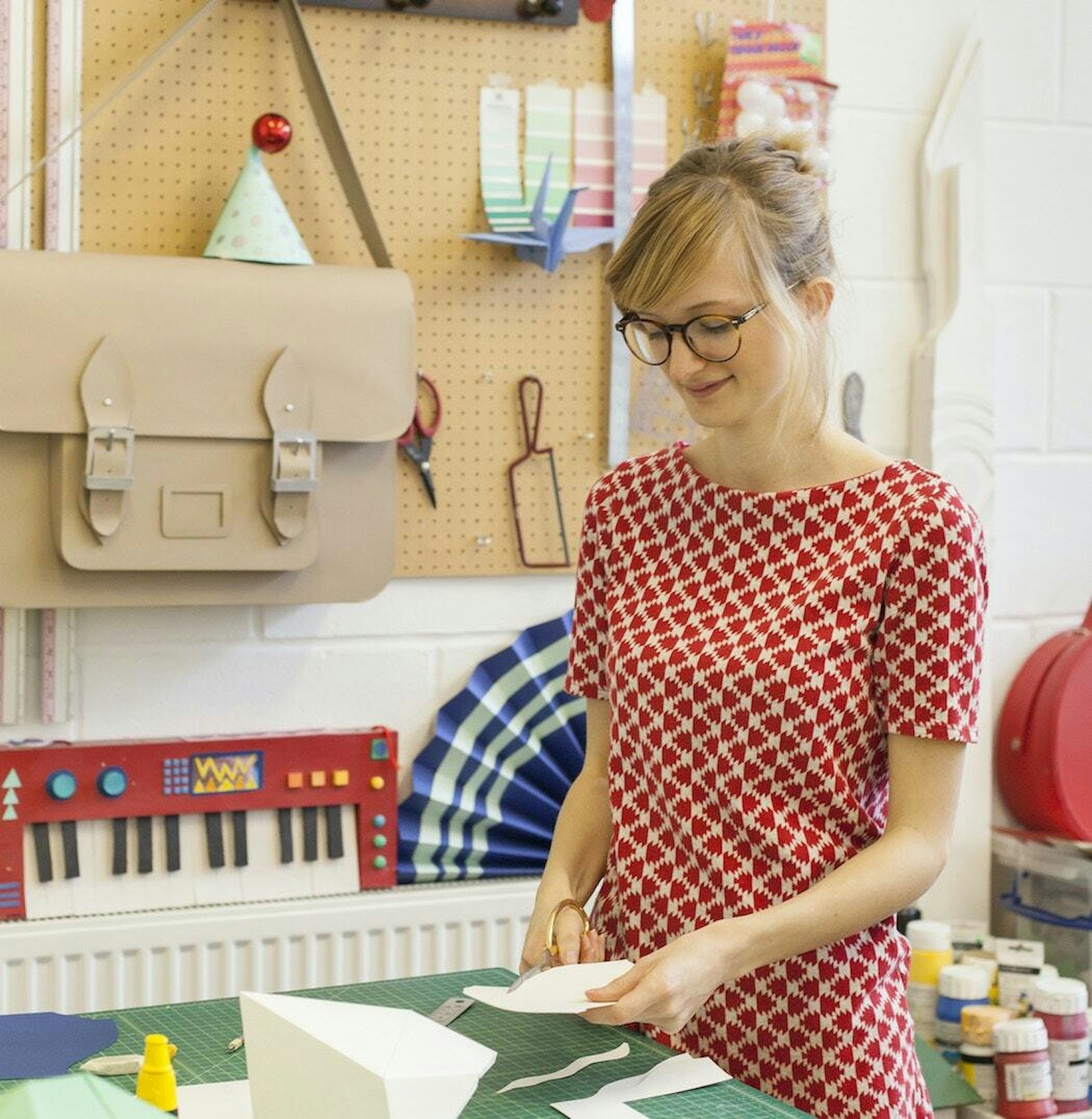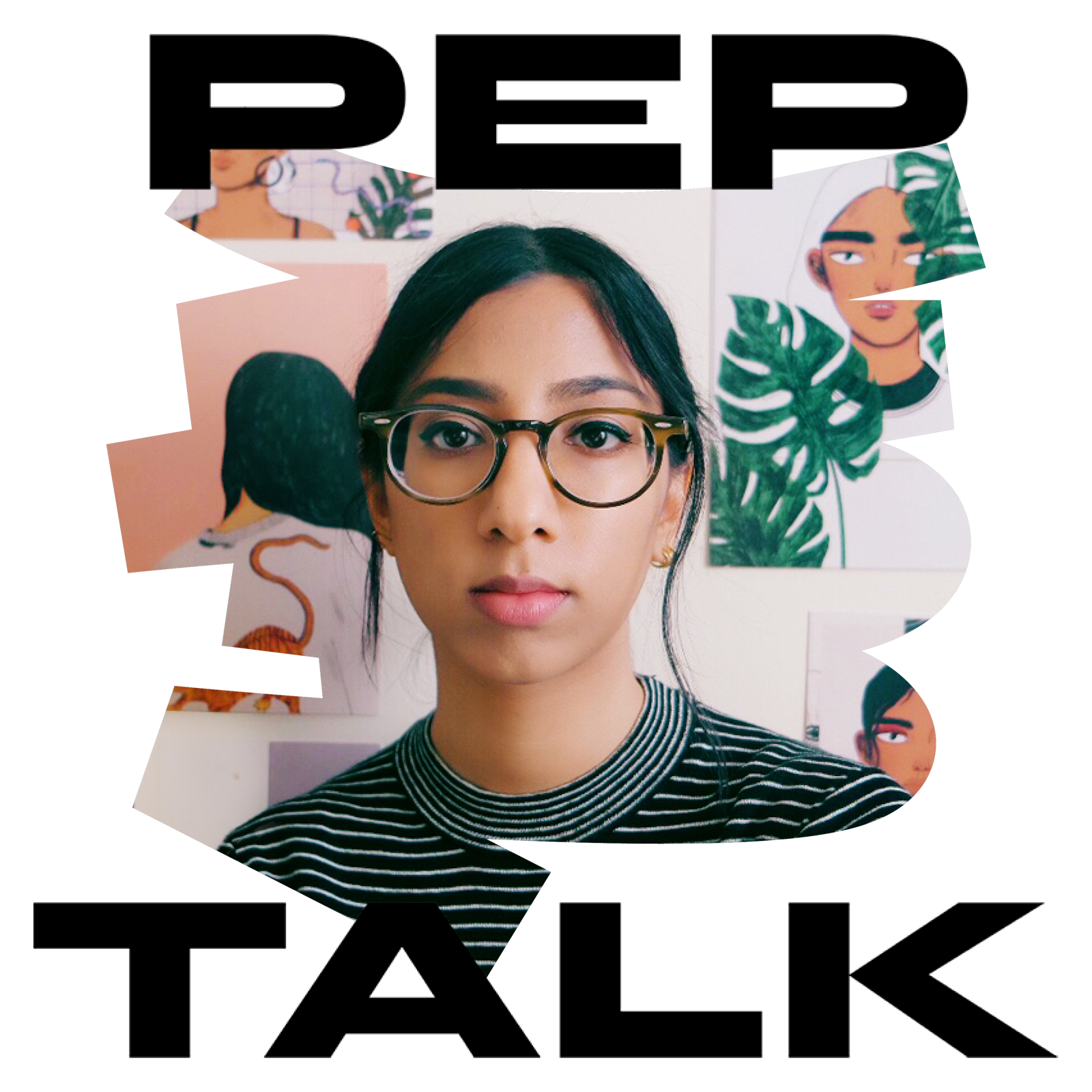Set designer Hattie Newman on tools, tricks and making it up as you go along
When Hattie Newman graduated from UWE’s Illustration course in 2008, she didn’t even know her job existed. Working from her studio in East London this set designer and her playful, precise and carefully crafted work is now in high demand. With a keen eye and impressive command over both 3D sets and 2D images, Hattie has designed, built and photographed work for an impressive list of clients including Lacoste, John Lewis and The Guardian. Hattie talks to us about her life as a freelancer, relationships with clients and how she cut out a place for herself in the industry.

Hattie Newman
Job Title
Set Designer, Image Maker, Paper Artist (2008–present)
Based
London
Clients
Canon, NSPCC, Lacoste, The Guardian, TFL, Condé Nast, John Lewis, Honda
Education
BA Illustration, University of the West of England (2005–2008)
Website
Social Media
Day-to-Day
How would you describe your job?
I’ve been working for myself for about eight years. As a freelancer I get commissioned to work on editorial images, fashion editorial features, animations and advertisements for brands, magazines, newspapers and advertising agencies. A client will usually come to me for my style and the handcrafted, 3D nature of my work. I’ll design a set, build it and work with a photographer to capture it as an image.
Sometimes a client will come direct to me (through my website), through one of my agents (UK or US), or I’ll get a job from a photographer (usually one I’ve worked with before).
How did you land your current job?
I’ll arrive at the studio around 9am, get some emails done and plan the day. My assistants (usually two) arrive at 9.30. We will be making things most of the day, but I also spend a lot of the time on the computer writing emails and designing templates in Illustrator. At some point in the day, I’ll email my client ‘Work in Progress’ photos and wait for feedback. Normally we’ll finish at 6pm (this varies depending on how busy I am) and I’ll sweep the floor before cycling home!
I’m usually much more involved in the ideas and concept side of things for editorial jobs. If I’m asked to create an image to illustrate an article, then I’ll design it, build it and direct a photographer. For fashion editorials, the set will be inspired by the featured product (such as bags or shoes) and I’ll work with a stylist and photographer on the idea before sketching and building it. Advertising jobs tend to be more developed by the time the brief gets to me, so I’ll be given a concept, and probably a sketch to then develop and execute.
Where does the majority of your work take place?
On average I spend about five hours a day in front of my computer in my studio in East London.
“I never completely stop thinking about work; I enjoy coming up with personal project ideas when I have time off”.
How collaborative is your work?
Externally, I work with art directors, photographers, set builders, stylists, model makers, assistants, retouchers, animators, sound designers and DOPs.
What are the most and least enjoyable aspects of your job?
The most enjoyable has to be going to a photography shoot with a finished set and seeing it all come together in camera. The least enjoyable is having to constantly pack and unpack my materials. I spend about two days a month organising and sorting out my studio because I end up with so much stuff after jobs! It can get quite tedious. Emailing also seems to be a never ending distraction from actually making the work.
Would you say your work allows for a good life/work balance?
Yes. It’s easier now. As I earn more, I can say no to more jobs. I never completely stop thinking about work, and enjoy coming up with personal project ideas when I have time off. I also spend lots of time doing admin work. (On average about four hours every weekend, so not too bad!)
“I didn’t know my job existed when I first graduated – I made it up as I went along!”
What has been the most exciting project of the last twelve months?
Co-directing and building the Christmas TV commercial for Lacoste’s Fragrances.
What skills are essential to your job?
Good attention, making and communication skills (to be able to draw and communicate ideas).
What tools do you use most for your work?
I use my MacBook Air and monitor; Wacom pen; iPhone; Canon G7X Camera; Canon scanner and an OKI B412 printer. I’ll also use programmes including Adobe Illustrator, Photoshop, InDesign and Google Sketch up.
In addition to that: a cutting mat, scalpels and blades, scissors, pencil, ruler, rubber, drill, hammer, paint, glue, tape and much more!
How I Got Here
What did you want to be growing up?
A Blue Peter presenter or an architect
How (if at all) is the subject you studied useful to your current role?
Very useful – I’m always illustrating!
What were your first jobs?
I was a set assistant for a set builders called MakeStuff and a waitress and shop assistant before that.
What one move/step/person helped you the most at the start of your career?
There are two moments that immediately spring to mind. The first was when my boyfriend saw an eccentric cardboard pig on display in the design agency he was interning at. He asked his boss who made it, got their phone number and gave it to me. Nervously, I gave it a call. It turned out to be the number of a set builder (MakeStuff) in South London. He ended up giving me my first job in the creative industry – working in a team that made sets for window displays and retail installations.
The second happened about six months later while I was interning at YCN. They introduced me to the paper company, Fedrigoni. We arranged to meet and after showing them my work, they commissioned me to make a paper installation for their London showroom. The project got some good exposure and I started getting more commissions.
Was there a particular project you worked on that helped your development? Not that I can think of. I’ve learnt from every project I’ve worked on.
What skills have you learnt along the way?
Over the years I’ve become more skilled at making, developed lots of helpful tricks and learnt where best to buy tools and materials. I’ve learnt how to manage a team of assistants, client expectations; how to professionally estimate time and costs and make professional quotes, treatments and invoices. I’m also much better at writing good emails.
What’s been your biggest challenge?
Managing my time, taking regular breaks and giving myself some time off. At the beginning I had a really bad workspace set up, and often worked late at weekends. Paper cutting takes its toll on the body and I ended up with chronic back pain for two years. Now I have an electric desk so I switch between sitting and standing, and make sure myself and my team are comfortable.
Is your job what you thought it would be?
I didn’t know my job existed when I first graduated – I made it up as I went along! But after talking to some illustration students recently a lot of them want to be ‘Paper Artists’ so I think it’s a real job now.
Thinking Ahead
What would you like to do next?
I’d love to write and illustrate art books and work on a kids’ TV series. I can also see myself teaching university art students one day alongside my own work.
Could you do this job forever?
Yes.
What do you feel is the natural career progression for someone in your current position?
To work with bigger brands and on bigger commercial projects (like TV ads). Also to work internationally more often.
Words of Wisdom
What advice would you give to a young creative wanting to become a set designer?
Find opportunities to work on commercial projects, however small and gain experience assisting set designers and makers. Practice your craft and keep making exciting personal work that shows off your skills and unique style – be different! Build a professional website and portfolio PDF of your work and show it to people. Be friendly, enthusiastic and value yourself; remember that the client has commissioned you for your skills, experience and individuality – and that’s worth being paid for.
Interview by Marianne Hanoun
















